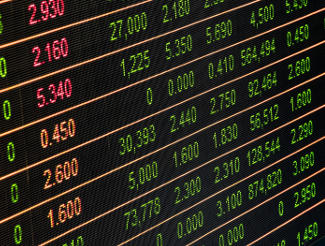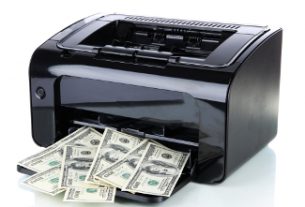A major trend in investing over the past decade has been the tremendous growth of exchange-traded funds (ETFs). ETFs have sprouted up to offer investors the ability to invest in a number of different assets, some of which they otherwise would have great difficulty investing in. That has opened up the range of investment options and allowed ordinary investors to enter new markets, diversifying their portfolios and giving them greater opportunities to grow their wealth.
Gold is one of those assets that has seen tremendous interest from ETF investors, with gold ETFs continuing to rise in popularity. But while many investors may see investing in gold ETFs as a solid way to gain exposure to gold, hedge their investment portfolio, and protect their wealth, there are many drawbacks to gold ETFs that make them less than ideal investment vehicles for those who really want to invest in gold.
You Don’t Actually Own Gold
If you invest in a gold ETF, you don’t actually own gold. You own shares in a fund that owns a certain quantity of gold. Each investor can then buy a share in that fund, but that doesn’t make you a part owner of any gold, just a holder of shares.
Those shares are supposed to rise and fall with the price of gold, but there are other factors that play a role in share price too. If thousands of investors all of a sudden had to liquidate their shares for some reason, the share price would plummet even though the value of the underlying gold asset hadn’t changed.
Can’t Take Delivery of Gold
Not only do you not own gold with a gold ETF, you can’t even take delivery of physical gold if you want to. Well, in some cases you may be able to, but only if you own millions of dollars worth of shares. You’ll have to look at the fine print of a particular fund’s contract, but in most cases physical delivery is at the discretion of the fund managers and is structured so that only large institutional investors have the ability to get physical gold.
Custodial Issues
Then there’s the issue of who actually holds the gold that the fund supposedly owns. Gold ETFs contract with gold custodians to hold the gold that they claim they own. But each custodian is allowed to contract with subcustodians to actually hold that gold. And those subcustodians can contract with other subcustodians, etc. At the end of the day you don’t actually know where the fund’s gold is held, whether or not it is insured, and whether or not it is encumbered by being loaned out or being part of a repurchase agreement.
Taxes and Fees
Returns on shares in gold ETFs are subject to taxes and fees. The fund has to pay the managers fees to manage the fund, pay listing fees to the exchanges on which they’re listed, pay fees to custodians to hold the gold, etc. And in many cases those fees are paid for by selling gold from the fund’s holdings. That in turn triggers tax consequences that could wreak havoc on your tax planning if it creates capital gains that need to be factored in to your tax returns.
Share Inflation
Because the fund may be selling gold to meet expenses, that means that each share in the fund may be “backed” by a decreasing amount of gold. It has long been speculated that gold ETFs issue many more shares than they have gold backing for, leading to a definite difference between “paper gold,” i.e. ETFs, and “physical gold,” i.e. tangible gold coins and bars.
These are all major drawbacks that investors need to be aware of before they invest in gold. There are far better options for those who want to protect their assets, such as a gold IRA, or even just buying gold coins and bars and storing them oneself. Don’t let popularity of a particular investment vehicle drive you to make financial decisions that aren’t the best for you.
This article was originally posted on Goldco.




